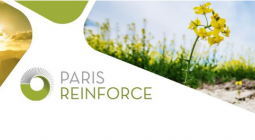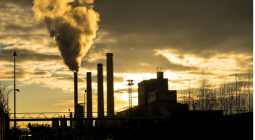From Numbers to Insights: How to Think about Economic-Climate Modelling

Climate-economy models are a powerful tool for providing insight into sensible climate policy choices and how they would impact our economy. As the EU announces stricter climate targets, there are an increasing number of modelling studies published attempting to do just so. However, these models are highly complex and largely inaccessible to wider audiences.
On May 26, 14.00 CEST, the PARIS REINFORCE project held an online webinar to discuss some of the key issues that policymakers should consider when confronted with new modelling studies. For example, why do different models provide very different perspectives when trying to answer the same question? Why is it that certain models are better suited to certain policy questions? How can we sensibly form our own opinions about how strongly to trust new modelling results?
The goal for the event was to hold a discussion on the sensible usage and interpretation of climate-economy models. The desired outcome from the workshop was a conversation, which would be informative for policy-interested stakeholders that are confronted with modelling studies. The core of the PARIS REINFORCE project is effectively incorporating stakeholders into modelling worlds. Such an event was therefore useful for the project’s internal thinking and hopefully for a wider audience.
The event was broadcast live on the Bruegel's website and remains hosted online. This means that interested policymakers and other stakeholders are able to watch the event recording at any point in the future. The digital audience was able to pose questions/comments to the panel using the online tool, sli.do (a total of 33 questions/comments were posed through the platform).
Opening presentation
The event began with a 30-minute presentation by Georg Zachmann (Bruegel). The title of the presentation was: ‘From Numbers to Insights: Interpreting climate-economy modelling results for policymakers’. The purpose of the presentation was to provide an overview on what economy-climate models are used for, and how non-modellers should approach modelling studies.
The presentation put forward the argument that models “are a useful tool to organise knowledge and build consensus”. Economics seeks to translate impacts and constraints into numbers to establish the impacts of different decarbonisation pathways; however, achieving this perfectly is impossible. Models are able to provide arguments for action: they can highlight the requirements, obstacles, and trade-offs for meeting a certain goal. However, it was noted that understanding a model requires a huge time investment. Models are associated with lots of jargon and complex concepts. To derive useful information from a modelling study, it is important to consider results in the context in which they are produced, and this is difficult. Even experts commonly disagree on modelling choices and core assumptions.
The second half of the presentation then put forward some ideas around the following two themes:
- How should policymakers look at modelling studies?
- What questions should they ask modellers?
A checklist of proposed useful questions, which non-modellers should ask when confronted with a new modelling study, were discussed:
- Who designed the questions? Questions already imply judgement and set agendas.
- Which model is used to answer the question? If the model is too big for the question, then there is the risk of generating noise.
- What is the baseline?
- How strongly should we believe the results? This decomposed into the following elements: sensitivity analysis; differences across models; intuitive explanation of sign and size; and accessible methods for interacting with model scenarios.
Panel discussion
The event then moved to panel discussion, among Ewelina Daniel (European Commission, DG Energy, Unit A4 Economic analysis and financial instruments) and two consortium members, Ajay Gambhir (Imperial College London) and Glen Peters (CICERO), moderated by Georg Zachmann. Each participant was given five minutes to offer initial remarks to the opening presentation.
During the discussion, a number of points were raised and discussed. Certain key points are summarised below:
- There are certain qualitative elements (e.g., political feasibility), which cannot be incorporated in models. How can such factors be considered alongside quantitative modelling output? During scenario design, qualitative features can be included. When designing scenarios, discussions with stakeholders can shed light on which technologies or behaviours can be assumed to be feasible within local contexts.
- In response to a discussion about the adaptability of modelling teams, the example was offered of the modelling community, which has been criticised in the past for excessive use of negative emissions technologies (like bioenergy carbon capture and storage, or BECCS) to achieve low emission pathways. This fact is now being addressed and studies are currently being produced, which are less reliant on BECCS.
- Regarding a question on whether policymakers derive more utility from models or modellers themselves, an analogy was put forward that ‘models open the door’ but then conversation is required. This was in keeping with a main theme of the workshop. Models are not magic machines that provide answers. Instead, they can shed light on particular topics, but should be seen as the catalyst for further discussion and exploration.
- When reflecting on the future, it was noted that model improvements (enabled by faster computers) are likely to enable better predictions/simulations in the future. However, they will inevitably become more complex. It is critical that modelling teams not allow models to become self-defeating as they become too complicated for non-modellers to understand.
Closing presentation
Haris Doukas (National Technical University of Athens) closed the event with remarks on what had been discussed as well as providing an outlook for the future of the PARIS REINFORCE project. He spoke to the fact that models must be considered within a broader framework of competing questions, and that nothing is implemented in isolation. For example, when deploying new renewable electricity generation, what are the effects on land use? Are there possible environmental consequences that in turn are perceived as social implementation barriers?
Drawing from project results and policy/academic publications, he also emphasised the role of ‘game changing’ technologies in modelling: it is important to develop better representation of emerging and early-stage technologies as well as large scale behavioural change. Closing remarks provided an overview of ongoing stakeholder dialogue and explained the future workshops that the project will hold, as well as the attempts through a series of workshops within and outside of the European Union to better incorporate sensible stakeholder preferences into models.
Research papers produced in the context of the project were also mentioned to support these points.
Link
Click here to watch the event recording!
PARIS REINFORCE




